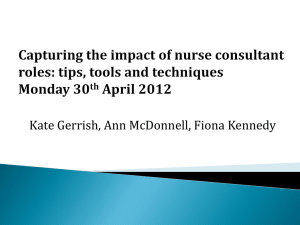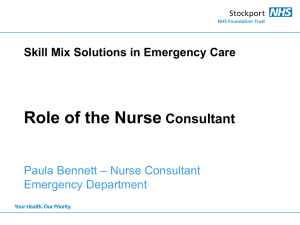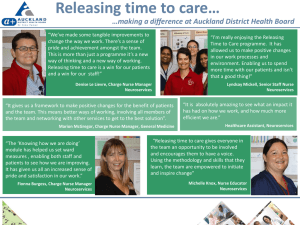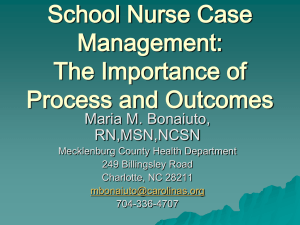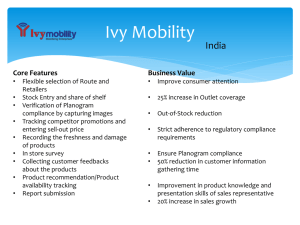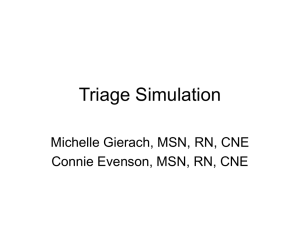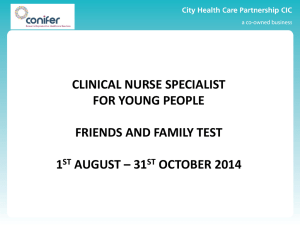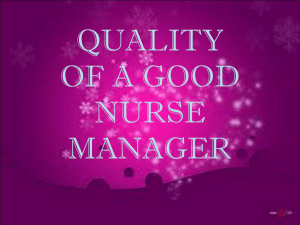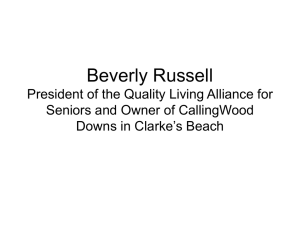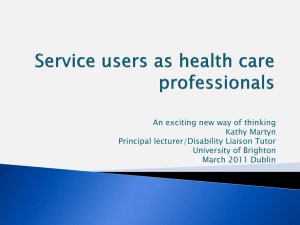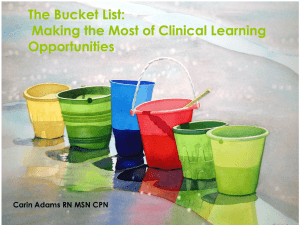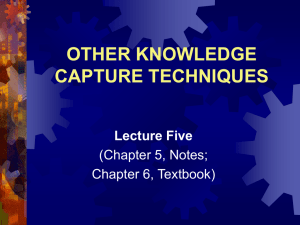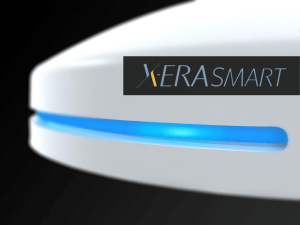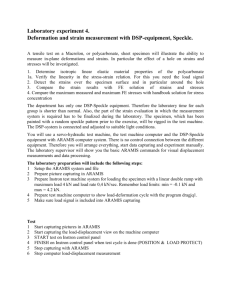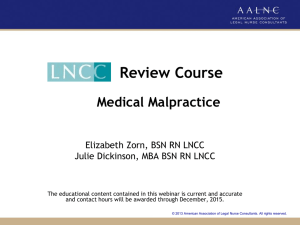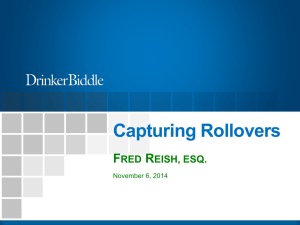Capturing the impact of Nurse Consultant Posts
advertisement
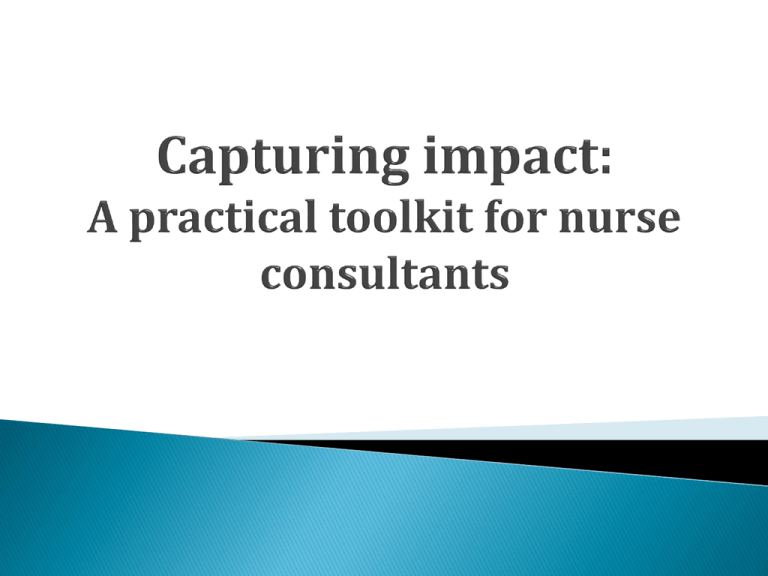
• Practical resource • Evidence based – developed through our research study • Draws on the framework of impact, practicalities of capturing impact & lessons learned • Activities and examples • Positive feedback from nurse consultants and nurse managers Introduction to the toolkit & how to use Section 1 – Capturing Impact Section 2 – Your impact – identifying areas & priorities Section 3 – Guidance on capturing impact Section 4 – Evaluating economic aspects Section 5 – Examples of capturing impact Section 6 – Who needs to know about your impact? Section 7 – Examples of tools Not an exhaustive guide, but practical assistance to: ◦ Identify key areas of impact relevant to your post ◦ Assess barriers/facilitators ◦ Consider different approaches to demonstrate your impact Who might find it useful? ◦ ◦ ◦ ◦ Developed for use by nurse consultants – new & established Line managers Other advanced practice nurses (e.g. CNS, NPs) Allied health professionals in consultant roles What do we mean by impact? ◦ ‘Influence’ or ‘difference’ brought about by providing a service or having you as a NC in post. ◦ ‘Added value’ to the organisation / what’s unique? Difference between process and outcome ◦ Process – what you do in your role (e.g. 4 core functions) ◦ Outcome – end result & impact you have through the activities you engage in Variety of reasons you might want to capture your impact Who are the stakeholders for your post and what impact is important to them? ◦ Activity 1 – identifying stakeholders for your post ◦ Valuable insights into your impact ◦ Tool 1 (page 43) could be used to gather stakeholder views What do you do on a day-to-day basis? (Activity 2) What impact do these activities have? (Activity 3) Activity 4 – identify examples of impact from your own work relating to the different areas ◦ Patients ◦ Staff ◦ Organisation Not all may apply to all roles Some outcomes may apply to more than one domain (e.g. smoking cessation) Use flexibly/degree of personal judgement Cannot capture every impact! Need to prioritise Worthwhile exploring impact in all 3 domains (including indirect impact through the work of other staff…) Activity 6: Assessing the barriers & facilitators to capturing evidence of impact What approaches might be used to capture impact (e.g. existing data, quantitative, qualitative) Key issues/questions to ask relating to using the different approaches Worked with two health economists who developed a framework for evaluating economic aspects of the role Specific examples from the NCs involved in the study or published literature relating to the 3 domains and their specific indicators Influenced by initial reasons for capturing impact but may include: ◦ ◦ ◦ ◦ Managers making decisions about service developments Annual appraisal with line manager Trust Board Senior nurse managers Important in raising your profile & visibility in the Trust & externally Copies of the tools referred to in the examples presented in Section 5 May need to adapt to suit specific needs Not presented as the ‘best’ tools available – you may already know of better ones in your speciality Individual copies are available on our website: http://research.shu.ac.uk/hwb/ncimpact Advised to contact the authors for permission to use/adapt their tools Hopefully a practical, pragmatic/realistic guidance However: ◦ Limited piloting of tools ◦ We gave NCs support during piloting phase ◦ Needs further validation ‘It should be in the induction pack for new nurse consultants’ 'If new to post I’d find the toolkit very useful but also it’s useful for nurse consultants to reflect on their practice and provide evidence to support and improve practice' 'I could see it forming part of performance review and my own portfolio/record of progress' ‘Once you’ve got the mindset, you will be able to collect the data to demonstrate impact as part of day-to-day practice’
